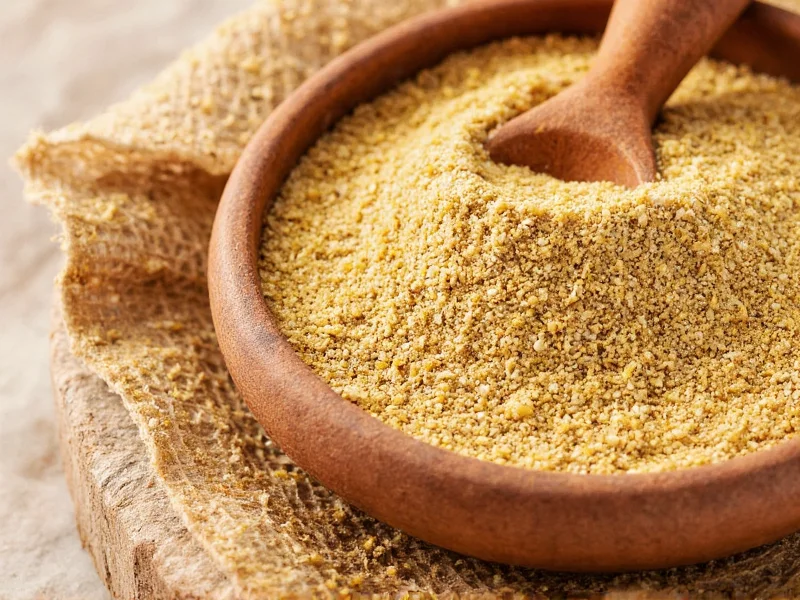Understanding how to use tahini as a seasoning transforms ordinary meals into extraordinary culinary experiences. Unlike traditional spice blends, tahini seasoning offers a unique combination of nuttiness, creaminess, and subtle bitterness that works across multiple cooking applications. This versatile condiment has become a staple in modern kitchens seeking healthy, flavorful alternatives to dairy-based sauces and heavy dressings.
Understanding Tahini Seasoning's Flavor Profile
Tahini seasoning derives its distinctive taste from ground sesame seeds, creating a complex flavor that's simultaneously nutty, earthy, and slightly bitter. When properly prepared, it offers a smooth, creamy texture that carries other flavors beautifully. The magic happens when you balance the tahini paste with acidic elements like lemon juice or vinegar, which cuts through the richness and creates a harmonious seasoning base.
Best Food Pairings for Tahini Seasoning
Certain foods naturally complement tahini seasoning's unique characteristics. The right pairings highlight tahini's strengths while creating balanced, satisfying dishes. Below is a comprehensive guide to optimal tahini seasoning applications:
| Food Category | Best Pairings | Recommended Preparation |
|---|---|---|
| Vegetables | Roasted cauliflower, eggplant, sweet potatoes, asparagus, broccoli | Drizzle warm tahini sauce over roasted vegetables for maximum flavor absorption |
| Proteins | Grilled chicken, lamb, salmon, falafel, tofu | Use as marinade or finishing sauce; works particularly well with Middle Eastern spice rubs |
| Grains & Legumes | Quinoa, couscous, lentils, chickpeas, farro | Mix directly into warm grains for instant flavor enhancement |
| Salads | Mediterranean salads, kale salads, grain salads, cucumber salads | Thin with additional lemon juice and water for perfect dressing consistency |
| Street Food | Shawarma, gyros, pita sandwiches, stuffed grape leaves | Use as dipping sauce or spread for authentic Middle Eastern flavor |
How to Use Tahini as a Seasoning: Practical Applications
Many home cooks limit tahini to hummus or baba ghanoush, missing its potential as a versatile seasoning. Here's how to incorporate tahini seasoning into your cooking routine:
As a Dressing Base
Tahini dressing recipes form the foundation of countless healthy salads. Combine ¼ cup tahini with 2-3 tablespoons lemon juice, 1-2 minced garlic cloves, salt to taste, and enough water to reach desired consistency. This basic tahini dressing works with virtually any green salad, especially those featuring bitter greens like arugula or radicchio that benefit from tahini's creaminess.
As a Marinade for Proteins
Tahini marinade for chicken or fish creates a beautifully caramelized exterior when grilled or roasted. The sesame paste helps spices adhere to proteins while adding moisture. For best results, combine tahini with yogurt, lemon zest, cumin, and coriander before applying to meats. Allow proteins to marinate for at least 30 minutes (or up to 4 hours for chicken) before cooking.
As a Finishing Sauce
Drizzling tahini sauce for falafel or grilled vegetables immediately before serving adds richness without overwhelming other flavors. The key is proper consistency—thinner than dip consistency but thicker than dressing. Warm the sauce slightly before drizzling for optimal flow and flavor release.
In Spice Blends
Homemade tahini seasoning blend can be incorporated into dry rubs for meats or vegetables. Mix tahini paste with sumac, za'atar, smoked paprika, and a touch of cayenne before applying to proteins. The tahini helps the spices adhere while adding complexity to the flavor profile.
Tips for Perfect Tahini Seasoning Every Time
Creating the ideal tahini seasoning requires attention to detail. Follow these professional tips to elevate your preparations:
- Always thin with acid first: Add lemon juice or vinegar to tahini before water to prevent seizing
- Use room temperature ingredients: Cold liquids cause tahini to clump; bring all ingredients to room temperature
- Season in stages: Add salt gradually after thinning, as concentration changes with consistency
- Embrace the separation: Natural tahini separates; stir thoroughly before measuring for consistent results
- Balance bitterness: High-quality tahini has pleasant bitterness; counter with lemon rather than excess sweetener
Common Mistakes to Avoid with Tahini Seasoning
Even experienced cooks make errors when working with tahini. Steering clear of these pitfalls ensures perfect results:
Adding water directly to tahini paste causes immediate clumping and requires starting over. Always incorporate acid first to create an emulsion base. Using old or rancid tahini dramatically affects flavor—check expiration dates and smell for sourness before use. Over-thinning creates a watery sauce that lacks body; adjust consistency gradually. Ignoring tahini's natural bitterness leads to over-sweetening, which masks its distinctive flavor.
Storage and Shelf Life of Prepared Tahini Seasoning
Properly stored tahini seasoning maintains quality for 4-5 days in the refrigerator. Transfer to an airtight container immediately after preparation. The acid content helps preserve freshness, but separation is normal—simply stir before reuse. For longer storage, freeze in ice cube trays then transfer to freezer bags for up to 3 months. Thaw overnight in the refrigerator before use.











 浙公网安备
33010002000092号
浙公网安备
33010002000092号 浙B2-20120091-4
浙B2-20120091-4